Introduction to Boat Covers: Why Protection is Essential
Boating is an exciting and rewarding hobby, but it comes with its set of challenges, particularly when it comes to maintenance and protection. A boat cover is a crucial investment for any boat owner. Choosing the right boat cover, especially when working with a budget, can be a daunting task. This guide aims to navigate the waters of selecting the best cheap boat cover without compromising on quality.
Shielding Your Vessel from the Elements:
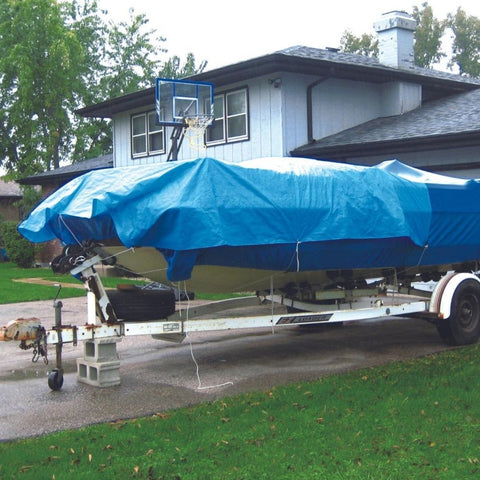
The primary purpose of a boat cover is to shield your vessel from:
- Sunlight's damaging UV rays: Prolonged exposure to UV rays can fade paint, damage upholstery, and crack plastic components. A boat cover acts as a barrier, preserving your boat's vibrant appearance and preventing costly repairs.
- Rain and snow: Moisture can wreak havoc on your boat, causing rust, mildew, and other forms of deterioration. A waterproof cover ensures your boat stays dry, preventing these issues and maintaining its top condition.
- Dust and debris: Windblown dust and debris can accumulate on your boat, causing scratches and dulling its shine. A cover acts as a shield, keeping your boat clean and pristine.
Beyond the Basics: Added Benefits of a Boat Cover:
While protection from the elements is paramount, a boat cover offers additional benefits:
- Increased security: A boat cover can deter theft and vandalism, providing peace of mind when your boat is stored.
- Reduced maintenance: By minimizing exposure to the elements, a cover can significantly reduce the time and effort needed for cleaning and maintenance.
- Improved resale value: A well-maintained boat with a protective cover will fetch a higher price when it comes time to sell.
Understanding Different Types of Boat Covers
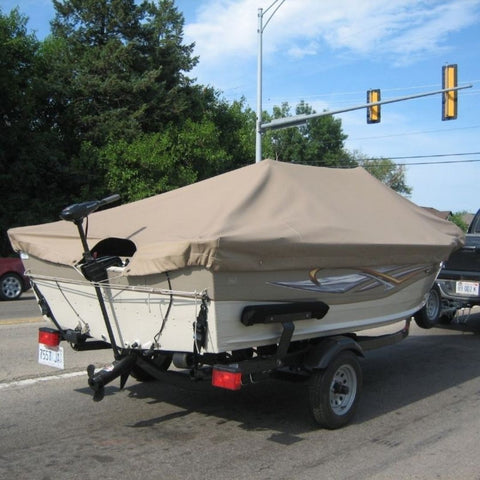
Protecting your boat from harsh weather and the elements is essential for its longevity and preservation. The right boat cover will shield it from sun damage, rain, snow, dust, and debris, keeping it looking its best.
There are various types of boat covers available, each with its own unique features and benefits. Choosing the right one depends on your specific needs and preferences.
By Coverage
- Bow-to-Stern Covers: These covers offer full protection for your entire boat, from the bow to the stern. They are ideal for long-term storage or protection while moored.
- Console Covers: These covers protect your boat's console, which houses important electronics and instruments.
- Dodgers: These covers provide shade and protection from wind and spray for the cockpit area.
- Bimini Tops: Similar to dodgers, bimini tops offer shade and protection for the cockpit area but extend further back towards the stern.
- Camper Tops: These are essentially full enclosures that provide complete protection for the entire boat, including the cockpit and seating areas.
By Fit
Ensuring the cover fits your boat snugly is essential for effective protection.
- Custom Fit Covers: These covers are tailored to the precise dimensions of your boat, offering the most snug and secure fit. They are typically more expensive but provide superior protection.
- Semi-Custom Fit Covers: These covers are made for a specific range of boat models and sizes, offering a more affordable option than custom covers while still providing a good fit.
- Universal Fit Covers: These covers are designed to fit a wider range of boat models and sizes. They are the most affordable option but may not provide as snug a fit as custom or semi-custom covers.
By Material
A good boat cover is made from durable materials like polyester or canvas, offering resistance to weather and UV rays.
- Polyester: This is the most common material for boat covers due to its affordability and durability.
- Acrylic: Acrylic offers superior UV protection and is less prone to fading than polyester.
- Sunbrella: This is a high-quality, marine-grade fabric that is water-resistant, UV-resistant, and mildew-resistant.
- Canvas: This is a traditional material for boat covers that is very durable but requires more maintenance than other options.
Other Considerations
Look for covers that are easy to install and maintain, as this will save time and effort.
- Ventilation: Some boat covers include vents to prevent moisture buildup and mildew growth.
- Tie-Down System: Different covers utilize various tie-down systems, such as straps, buckles, and drawstrings. Choose one that is secure and easy to use.
- Warranty: Some brands offer warranties on their boat covers, which can provide peace of mind.
Trailerable Boat Covers
These covers are designed for boats that are frequently transported. They are sturdy and can withstand high winds and the rigors of road travel.
Mooring Covers
Ideal for boats that remain in the water, mooring covers offer protection while the boat is anchored or docked.
Custom vs. Universal Boat Covers
Custom covers are tailored to fit the exact dimensions of your boat, whereas universal covers are more affordable and fit a range of boat sizes but may not offer a perfect fit.
Top Picks for the Best Cheap Boat Covers
Heavy Duty White Poly Tarps In Bulk
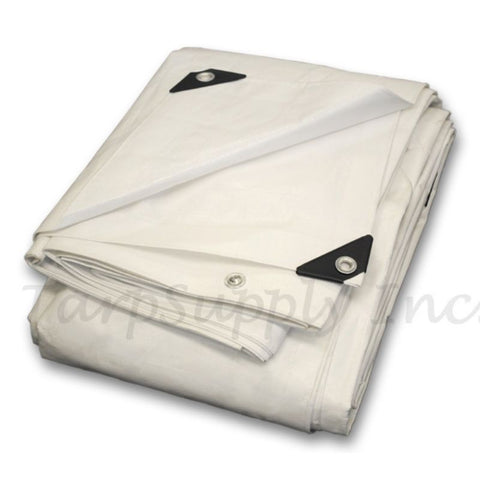
Super Heavy Duty Silver Poly Tarps In Bulk

Boat Covers Installation Tips for Maximum Protection
Proper installation is the invisible armor shielding your boat from the elements. It's the difference between a snug, protective shield and a flapping, ineffective sail. Don't let your investment go unprotected! Here are some essential tips to ensure your boat cover provides maximum protection:
Preparation is Key:
- Cleanliness is next to boatliness: Before draping on the cover, give your boat a thorough wash. Grit and grime can act like tiny sandpaper, abrading the fabric and shortening its lifespan.
- Know your enemy: Identify potential snagging points like antennas, windshields, or loose fittings. Pad these areas with soft cloth or purpose-made protectors to prevent rips and tears.
- Weather the forecast: Check the wind direction and choose a cover orientation that minimizes flapping. For windy conditions, consider using additional tie-down points or straps.
The Perfect Fit:
- Size matters: A too-loose cover will billow in the wind, creating stress points and flapping against the gelcoat. A too-tight cover may restrict access or rip under pressure. Choose the right size for your specific boat model.
- Unroll with a plan: Start at the bow and unroll the cover smoothly towards the stern, ensuring it drapes evenly over all contours. Don't let it bunch up or snag on protrusions.
- Pole power: Utilize support poles (if your cover has them) to create a high peak and prevent water pooling. This promotes drainage and reduces the risk of mildew and rot.
Securing the Fortress:
- Tie down tight: Don't rely on hope and duct tape! Use the provided straps and tie-down points, securing them firmly to trailer brackets or other designated anchor points. Opt for durable, weatherproof straps that won't stretch or snap.
- Double-check your knots: Loose knots are an invitation for the wind to steal your cover. Ensure all straps are cinched tight and knots are secure.
- Bonus points for extra security: Consider using chafe guards or grommets on tie-down points to prevent wear and tear on both the cover and your boat.
Pro Tips for Maximum Protection:
- Regularly inspect: Check your cover for tears, loose stitching, or accumulated debris. Address any issues promptly to avoid further damage.
- Clean and store: After removing the cover, let it air dry completely before storing it in a cool, dry place. This prevents mold and mildew growth.
- Upgrade when needed: Don't wait for a catastrophic rip! Replace your cover before it fails, especially if you notice fading or significant wear and tear.
Proper installation is an investment in your boat's longevity and value. So, roll up your sleeves, apply these tips, and enjoy the peace of mind that comes with knowing your boat is well-protected.
Boat Covers Maintenance and Care for Long-Lasting Use
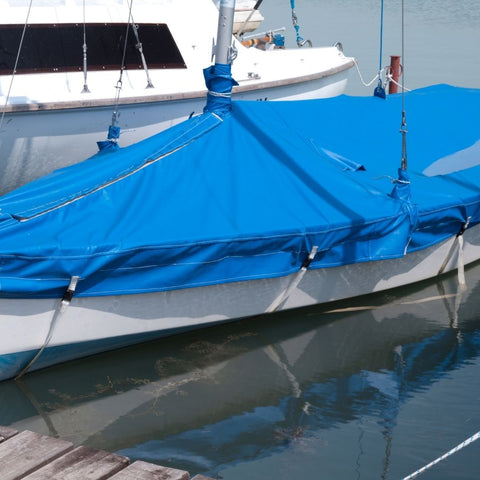
Keeping your boat cover in tip-top shape doesn't just improve its appearance, it extends its lifespan, saving you money and hassle in the long run. Here's a comprehensive guide to cleaning, storing, and repairing your boat cover for optimal performance:
Cleaning:
- Frequency: Aim for a thorough cleaning at least twice a year, with quick rinses after heavy rain or debris buildup.
- Method:
- Brush off loose dirt and debris with a soft-bristled brush (never use stiff bristles).
- Prepare a cleaning solution: Mix mild marine-grade soap or even gentle dish soap with lukewarm water. Avoid harsh detergents or bleach, which can damage the fabric.
- Use a sponge or soft cloth to gently scrub the cover, focusing on areas prone to grime like seams and pockets.
- Rinse thoroughly with clean water until all soap residue is gone.
- Never pressure wash your cover – the high pressure can damage the fabric and stitching.
- Drying:
- Allow the cover to air dry completely in a shaded area. Avoid direct sunlight, which can fade the fabric.
- Do not fold or store the cover until it's completely dry. Dampness can lead to mildew and mold growth.
Storage:
- Choose a cool, dry location: Avoid attics, garages, or basements with high humidity or extreme temperatures.
- Fold the cover loosely: Don't force it into tight folds, which can create creases and weaken the fabric.
- Stuff the cover with an air bag: This helps maintain its shape and prevents creases.
- Avoid storing the cover in direct sunlight: UV rays can damage the fabric over time.
Repair:
- Address small tears and punctures promptly: Left untreated, they can grow into larger rips.
- Use marine-grade repair kits: These kits come with patches and adhesive specifically formulated for boat cover materials.
- Follow the manufacturer's instructions carefully: Ensure proper application for a strong, lasting repair.
Additional Tips:
- Invest in a quality cover: A well-made cover with UV protection and mildew resistance will last longer and require less maintenance.
- Remove the cover before heavy rain or snow: This prevents water pooling and potential damage.
- Inspect your cover regularly: Look for signs of wear, tear, or sun damage.
- Reapply water repellent: Some covers benefit from a fresh coat of water repellent every few years to maintain their protective properties.
By following these simple guidelines, you can significantly extend the life of your boat cover and keep your pride and joy protected for seasons to come.
Buying Quality Boat Covers on a Budget
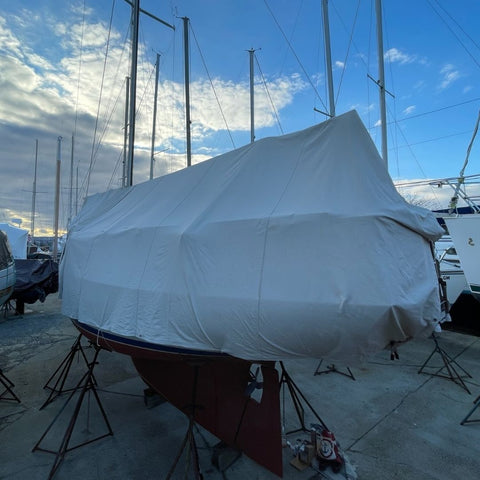
Finding quality boat covers on a budget can be tricky, but it's definitely possible! Here are some tips to get you started:
- Define your needs:
- Boat type and size: Different boat styles require different cover shapes and features. Measure your boat accurately to ensure a good fit.
- Storage or trailering: Will you be using the cover for storage or trailering? Thicker, more durable materials are better for trailering.
- Climate and weather: Consider the typical weather conditions in your area. Covers should be UV-resistant, waterproof, and breathable to prevent mildew.
- Consider your budget:
- Custom vs. semi-custom vs. universal: Custom covers offer the best fit but are the most expensive. Semi-custom covers are a good compromise, while universal covers are the most affordable but may not fit perfectly.
- Material: Marine-grade polyester or nylon are good budget-friendly options. Avoid flimsy materials that won't last.
- Features: Bells and whistles like tie-down straps, vents, and reinforced seams add cost, so prioritize the essentials.
- Pro tips for saving money:
- Buy off-season: Covers are often cheaper in the fall and winter when boating season is over.
- Look for clearance sales: Many retailers offer discounts at the end of the season or to clear out old inventory.
- Compare prices before you buy: Don't just grab the first cover you see. Take some time to compare prices and features from different retailers.
- Take care of your cover: A well-maintained cover will last longer, saving you money in the long run. Clean and store it properly when not in use.
Remember, the best boat cover for you will depend on your specific needs and budget. Do your research, compare prices, and choose a cover that will protect your boat without breaking the bank.
Conclusion: Balancing Cost and Quality
Finding the best cheap boat cover is about balancing cost with quality. By considering the types, key features, and brands, you can make an informed decision that protects your boat without straining your budget. Remember, a well-chosen boat cover is an investment in the longevity and appearance of your vessel.





